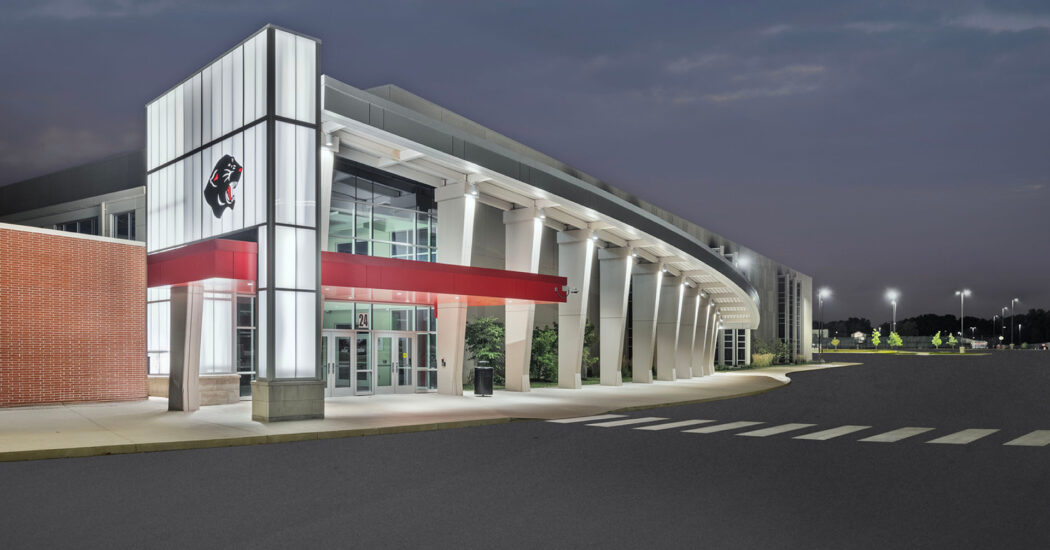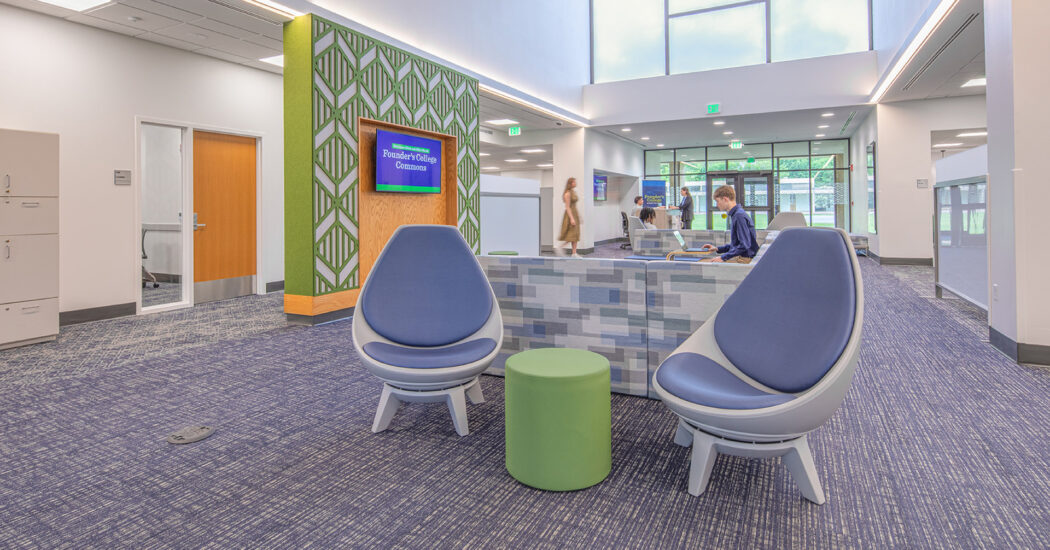How We Design to Keep Students Healthy
-
Category
Studio-K12, Innovation -
Posted By
Cindy McLoed -
Posted On
Apr 10, 2020
As we are acutely aware, now more than ever, schools are hot beds for illness—especially elementary and middle schools, where kids are still learning proper hygiene and how to avoid getting sick. The health of kids’ environment at school directly impacts the health of their families and society at large.
As architects, engineers, and interior designers, there are design decisions we can make that help promote cleanliness and minimize the spread of bacteria and viruses among students. Whether you are building a new school, planning renovations, or just evaluating your sanitary practices, look closely at the three areas below to ensure a healthy environment for your kids.
Hygienic Surfaces
Making surfaces easily cleanable is critical to maintaining a healthy school environment. All surfaces in restrooms, food prep areas, cafeterias, and clinics or nurses’ stations should be washable. Walls, floors, countertops, bathroom stalls, and even ceiling tiles should be non-porous and able to be frequently wiped down or power washed. Health codes also require materials used in these areas to be rated for cleaning with commercial products.
Seamless flooring materials, such as resin, that come up the side of the wall by at least four inches help to prevent the growth of bacteria and viruses in crevices and indentations. High-density polyethylene (HDPE) is a good choice for things like bathroom stalls because it is non-porous, easily cleaned, and durable.
Some materials designed for use in healthcare environments are also good considerations for schools. For example, antimicrobial solid surface counters are often used in hospitals to help stop the growth of bacteria and prevent cross-contamination. Certain types of flooring and other surfaces can also be specified with antimicrobial additives. These materials traditionally used in the medical field can provide an additional disease prevention mechanism in schools.
When possible, we also recommend choosing consistent materials across your campus and in all the facilities in your school district. This ensures consistent cleaning products and practices can be utilized across the board and be effective.

Cleanable surfaces and flooring materials – restroom in LaPorte Intermediate School and clinic in George Rogers Clark Middle School
Restroom Design
Restrooms—and what happens inside them—are a key focus in keeping students healthy. Reducing the number of surfaces they need to touch, improving the hand-washing process, and ensuring easy cleaning and sanitization of restrooms are all important aspects in preventing illness.
We do this by:
- Placing sinks outside of the restroom, particularly in elementary and middle schools so teachers can monitor student handwashing
- Choosing automatic flush toilets
- Choosing wall-mounted toilets for improved cleaning-ability
- Installing motion-sensor faucets, soap dispensers, and hand driers or paper towel dispensers
- Installing doors that swing out of the bathroom, so you do not need to grab a handle when exiting (after you’ve washed your hands)
- Eliminating doors to the restroom altogether
- Placing custodial rooms with hose bibs adjacent to restrooms for easy cleaning access

Handwashing stations in the hallways – Handley Elementary School and Mary Castle Elementary School
Student Well-Being
The connection between mental and physical health makes an important case for improving the overall well-being of your students. A healthy school environment isn’t just a hygienic one—it’s a positive place kids want to come.
One way to make your school a happier, healthier place through design is by increasing natural light. Daylight’s proven ability to increase serotonin levels, balance the circadian rhythm, and improve cognitive ability means more focused and successful (read: happier) students. Building orientation, use of windows and glass, and creative utilization of outdoor spaces all contribute to the amount of natural light students are exposed to throughout the school day.
Ensuring students have the spaces they need to be successful can also improve their school experience and overall mental and physical state. This includes places to socialize with their friends, de-compress alone, and learn according to their personal needs. Kids have varying levels of mental and emotional requirements, and catering to this spectrum will help each student feel more comfortable and happier while at school.

Solo study space and cafeteria with plenty of natural light and seating options to promote conversation – Slate Run Elementary School







